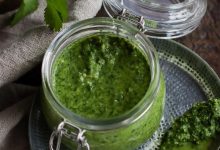Certainly, I’d be happy to provide you with all the information you’re looking for about a Small Plum Pudding recipe.
Recipe: Small Plum Pudding
History:
Small Plum Pudding is a traditional British dessert with a rich history dating back centuries. It was originally a way to preserve fruits through the winter months and was often associated with Christmas celebrations.
Recipe Ingredients:
- 1 cup breadcrumbs
- 1 cup mixed dried fruits (such as raisins, currants, and chopped prunes)
- 1/2 cup suet (or vegetarian suet for a meat-free option)
- 1/2 cup brown sugar
- 1/4 cup all-purpose flour
- 1/4 teaspoon ground cinnamon
- 1/4 teaspoon ground nutmeg
- 1/4 teaspoon salt
- 1/2 cup milk
- 1 egg
- 1/2 teaspoon vanilla extract
- Zest of 1 lemon and 1 orange
- 1 tablespoon brandy or dark rum (optional)
Recipe Instructions:
- In a mixing bowl, combine the breadcrumbs, mixed dried fruits, suet, brown sugar, flour, cinnamon, nutmeg, and salt. Mix well to evenly distribute the ingredients.
- In a separate bowl, whisk together the milk, egg, vanilla extract, lemon zest, orange zest, and brandy or rum (if using).
- Gradually pour the wet mixture into the dry mixture, stirring as you go, until all the ingredients are well combined.
- Grease a small pudding basin or mold with butter or cooking spray.
- Spoon the pudding mixture into the prepared basin, pressing it down lightly to remove any air pockets.
- Cover the basin with a layer of parchment paper and then a layer of aluminum foil. Secure the coverings with kitchen twine or a rubber band.
- Place the pudding basin in a large pot or steamer basket. Add enough water to the pot to come about halfway up the sides of the basin.
- Cover the pot with a lid and steam the pudding over medium-low heat for about 2 to 3 hours. Check the water level occasionally and add more water if needed.
- Once the pudding is steamed, carefully remove it from the pot and let it cool slightly before removing the coverings.
- Invert the pudding onto a serving plate. It should come out easily, revealing a beautifully molded dessert.
- Serve the Small Plum Pudding warm, accompanied by a traditional brandy sauce, custard, or a dollop of whipped cream.
Preparation Time:
The preparation time for Small Plum Pudding is approximately 30 minutes.
Steaming Time:
The steaming time for Small Plum Pudding is about 2 to 3 hours.
In total, you can expect to spend around 3 to 3.5 hours making this delightful and classic dessert.
Enjoy your Small Plum Pudding, rich with history and flavor!
Certainly, here are the nutrition facts and health information for a Small Plum Pudding:
Nutrition Facts (Per Serving – approximate values):
- Calories: ~350
- Total Fat: ~15g
- Saturated Fat: ~7g
- Cholesterol: ~40mg
- Sodium: ~150mg
- Total Carbohydrates: ~50g
- Dietary Fiber: ~2g
- Sugars: ~35g
- Protein: ~3g
- Vitamin D: ~2% DV
- Calcium: ~6% DV
- Iron: ~6% DV
- Potassium: ~4% DV
Health Information:
-
Moderate Calories: A Small Plum Pudding contains a moderate amount of calories, so it’s important to enjoy it in moderation, especially if you’re watching your calorie intake.
-
Fat Content: The pudding contains a notable amount of fat, primarily from suet and added fats. Be mindful of your fat intake, as excessive consumption of saturated fats may impact heart health.
-
Sugar: The pudding is relatively high in sugars, mainly from dried fruits and added sugars. Consuming too much added sugar can contribute to health issues, so consider it as a treat.
-
Fiber: While the pudding has some fiber from ingredients like breadcrumbs and fruits, it’s not a significant source of dietary fiber. Fiber is important for digestion and overall health.
-
Vitamins and Minerals: The pudding provides small amounts of vitamins and minerals, including vitamin D, calcium, iron, and potassium. However, it’s not a major source of these nutrients.
-
Portion Size: Due to its calorie and sugar content, consider enjoying a small portion. Pair it with a balanced diet rich in fruits, vegetables, whole grains, and lean proteins.
-
Traditional Treat: Small Plum Pudding is a traditional dessert often associated with special occasions. While it might not be the healthiest option, it can be enjoyed occasionally as part of cultural and festive traditions.
Remember that nutritional values can vary based on specific ingredients used and portion sizes. It’s a good idea to consult with a registered dietitian or healthcare professional for personalized advice on your dietary needs and choices.



